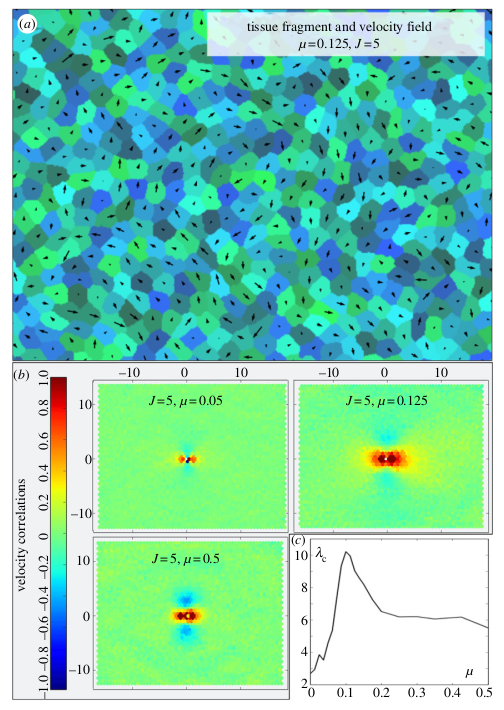
Citation
A.J. Kabla
Journal of the Royal Society Interface 9:3268-3278 (2012)
Abstract
Abstract
A number of biological processes, such as embryo development, cancer metastasis or wound healing, rely on cells moving in concert. The mechanisms leading to the emergence of coordinated motion remain however largely unexplored. Although biomolecular signalling is known to be involved in most occurrences of collective migration, the role of physical and mechanical interactions has only been recently investigated. In this study, a versatile framework for cell motility is implemented in silico in order to study the minimal requirements for the coordination of a group of epithelial cells. We find that cell motility and cell–cell mechanical interactions are sufficient to generate a broad array of behaviours commonly observed in vitro and in vivo. Cell streaming, sheet migration and susceptibility to leader cells are examples of behaviours spontaneously emerging from these simple assumptions, which might explain why collective effects are so ubiquitous in nature. The size of the population and its confinement appear, in particular, to play an important role in the coordination process. In all cases, the complex response of the population can be predicted from the knowledge of the correlation length of the velocity field measured in the bulk of the epithelial layer. This analysis provides also new insights into cancer metastasis and cell sorting, suggesting, in particular, that collective invasion might result from an emerging coordination in a system where single cells are mechanically unable to invade.
Figure sample

(a) An image of a motile tissue in the steady state, overlayed with the corresponding velocity field. Cell colours are arbitrary. (b) Maps of the velocity correlations around a cell migrating from left to right. These have been obtained for populations of 1600 cells. The unit distance is the cell diameter. (c) A graph of the correlation length lc as a function of the motile force μ, for J = 5.

